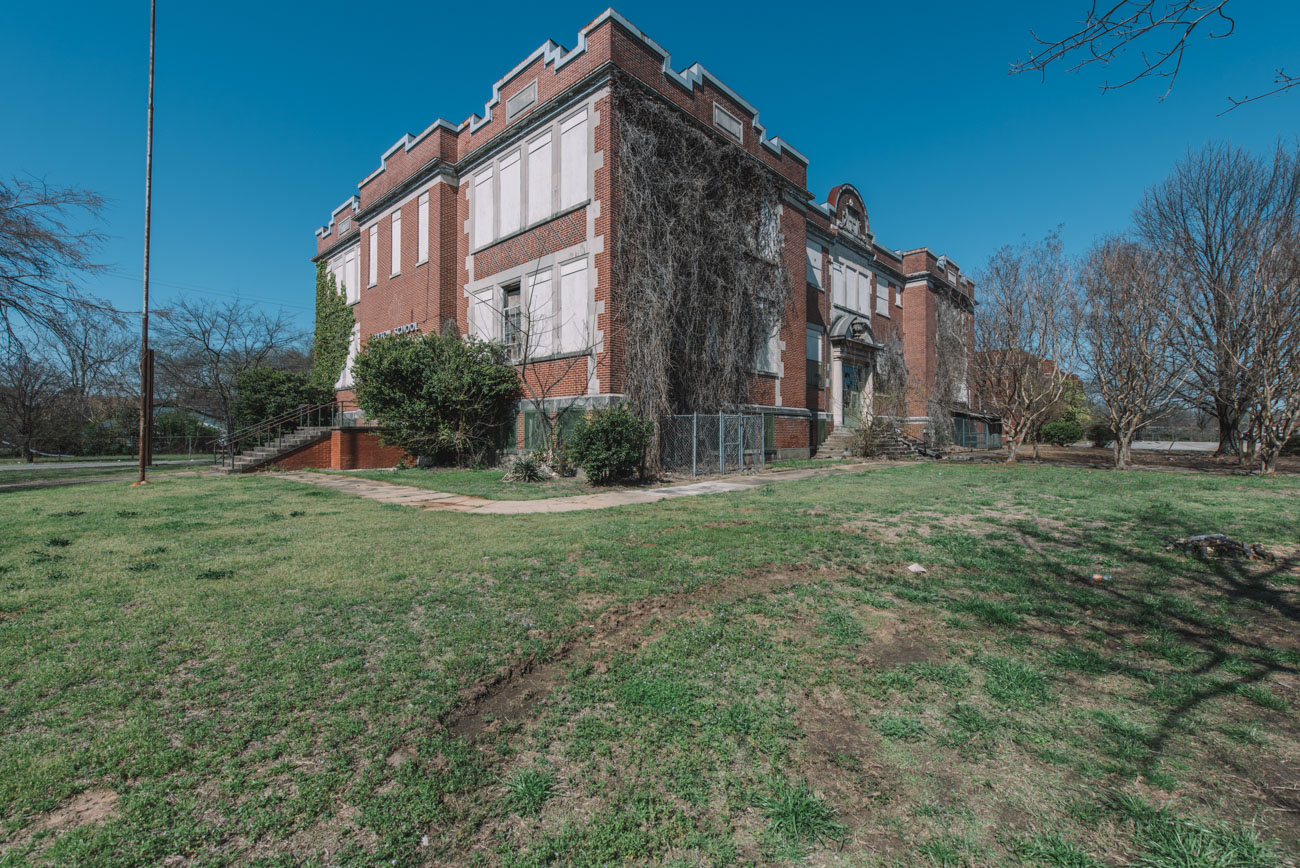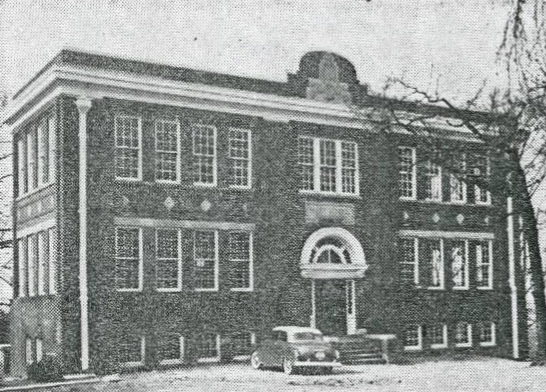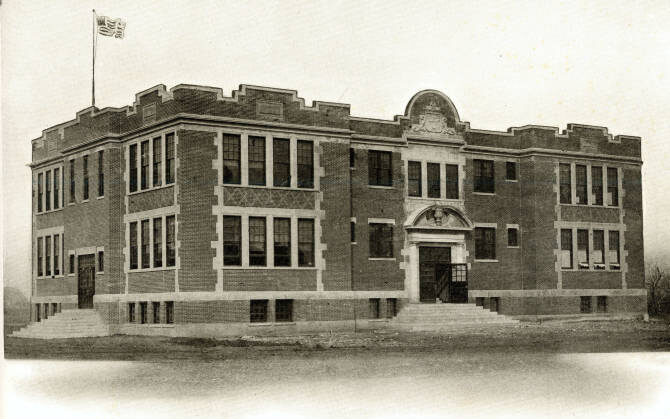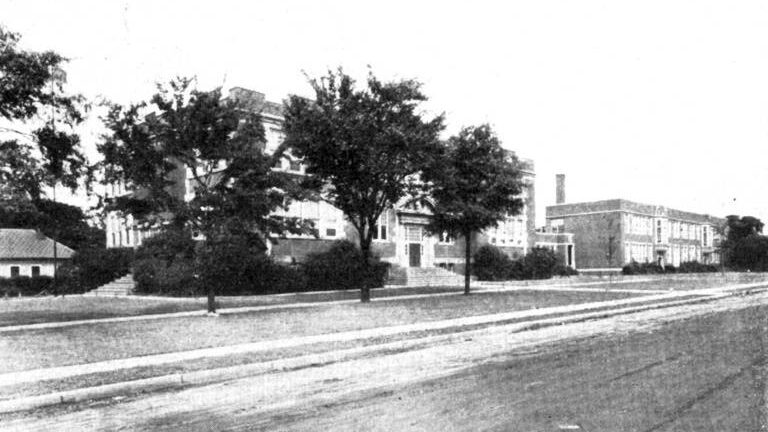| City/Town: • Birmingham |
| Location Class: • Educational |
| Built: • 1909 | Abandoned: • 2003 |
| Status: • Abandoned |
| Photojournalist: • David Bulit |
Table of Contents
The Town of Elyton
The story of the Elyton School and the town of Elyton dates back to when Jefferson County’s judicial center initially resided in Carrollsville, situated along the Huntsville stage road, where Powderly stands today. This quaint intersection, also known as Carrollton, boasted a blacksmith shop, a watermill, and enchanting Lombardy poplar trees. It derived its name from Thomas Carroll, an early settler who erected the county’s inaugural schoolhouse. A short distance from Carrollsville, the U.S. Congress allocated 2,560 acres for the benefit of the Connecticut Asylum for the Education of the Deaf and Dumb.
William Ely of Hartford, Connecticut, an attorney and representative for the asylum, arrived in Jefferson County, Alabama in 1820. Disheartened by the perceived desolation of the land, which he described as “broken, poor, and barren,” Ely advised the Connecticut board to promptly sell the property. Despite Ely’s appraisal of less than $1.50 per acre, the land fetched a respectable sum ranging from $15 to $100 per acre when sales commenced in February 1820. In the early 1820s, Ely generously donated several acres for the county’s courthouse and jail. In recognition of his contributions, the residents christened the burgeoning county seat as Elyton.

In 1821, Elyton’s population stood at 300. By 1870, it burgeoned into a vibrant community housing 1,000 residents, emerging as the pivotal transportation nexus of Jefferson County. Concurrently, the county’s total populace swelled to 12,345.
Elyton served as the juncture where three crucial Pony Express and stage lines intersected, facilitating connections between north and south Alabama as well as the eastern and western regions of the state. These routes, known as the Huntsville, Georgia, and Montevallo Roads, bustled with wagons laden with mail, cotton, corn, and assorted goods destined for shipment on steamboats traversing Alabama’s waterways.
In the late 1860s, a railroad stretching to Selma, Montevallo, and Rome, Georgia, was laid through Elyton. By 1871, the South and North Railroad, spanning from Montgomery to Decatur, was nearing completion. Elyton, serving as the commercial and transport hub for numerous counties and serving as the administrative nucleus of Jefferson County, evolved into the railroad epicenter of the Alabama mineral region.
The railroads though did not cross at Elyton. Promoters of the Elyton Land Company arranged to locate the crossing several miles east where they held options on swampy farmland. Twentieth Street and First Avenue, where the Brown-Marx Building is located, would become the center of the new city of Birmingham, officially incorporated on December 19, 1871.
Just two years later, promoters of Birmingham orchestrated a referendum to determine the location for a proposed new courthouse in Jefferson County. Employing ingenious promotional tactics such as excursion trains and complimentary barbecues, they successfully persuaded most voters to endorse Birmingham as the site for the new county seat. With the relocation of the county seat, a significant portion of Elyton’s population followed suit. Thomas Octavius Smith and Rufus Hansom Hagood seized the opportunity and purchased the abandoned courthouse, utilizing it as a mineral paint factory. Eventually, the structure was demolished, and in 1907, the first unit of the Elyton School was erected on the same lot.
Alley School
In 1902, the town of Elyton commissioned the construction of its first school, aiming to replace the community church, which had functioned as a public school since 1885 but with denominational teachings. I. W. McAdory led a committee alongside Thomas Alley, C. Olmutz, and W. P. Walker to strategize the development of a new building. The structure was quickly erected on a plot graciously provided by Olmutz.
The first session at the newly established Alley school faced setbacks, leading to its reorganization in 1904 under the administration of the Jefferson County Schools system, alongside the Elyton School and Washington Negro School.
In June 1908, the Elyton Board of Education initiated a call for proposals for the construction of two new schools. Notable architect David O. Whilldin’s proposal was ultimately selected. He envisioned the larger of the two buildings as a two-story structure with a basement, featuring a red brick exterior adorned with stone trim and a main entrance crafted from stone. The design encompassed twelve classrooms, two teachers’ rooms, and a principal’s room complete with a lavatory, all at a total cost of $25,000. This school would later be known as Elyon School.
Construction commenced in 1908 on the smaller of the two school buildings, a new two-story building featuring eight classrooms designed by Whilldin. The school was christened in tribute to Alley, who served as a representative for the Green Springs community on the Elyton Board of Aldermen. However, the building was left unfinished as the area’s expected residential growth failed to materialize. The walls, floors, stairs, and furnace were omitted, and only one of the four lower-level classrooms was enclosed, provided by a stove for heat.
This school incorporated classical decorative elements, a hallmark that Whilldin continued in his design work, notably evidenced in his later creations such as Ensley High School. Alley School was demolished in 1964 to make way for the construction of I-65.
Elyton School
Upon its completion in 1909, Elyton School transformed into a magnificent three-story edifice, characterized by its Jacobethan architectural style, blending brick and stone harmoniously. Notably, the building features front and side entrances situated on split levels between the basement and the first floor, creating a distinctive architectural impression. Contrasting with the red brick walls, horizontal and vertical stonework adds a striking visual contrast. The basement-level podium showcases a combination of ashlar masonry and brick, distinguished by a wide string course that separates it from the upper two floors.
The facade is composed of three distinct sections: a recessed central portion housing the primary entrance, adorned with decorative embellishments, flanked by wings on either side. Each group of windows on the outer faces of the projecting wings is framed by stone sills, lintels, and jambs; the outer jambs exhibit irregular shapes and ascend from the string course to the entablature. Diamond-shaped brick panels fill the gap between the two levels of windows.
Encircling the building is an entablature consisting of an architrave and two molded courses, crowned by decorative stone panels inset into a crenelated parapet above the roofline. This intricate architectural design showcases the meticulous craftsmanship and attention to detail that went into the construction of Elyton School.
Expansions
In 1910, Elyton transformed into a residential suburb of the City of Birmingham, marking a shift in its urban landscape. The Elyton school playground debuted in July 1920, offering a recreational space for students and the community. In 1926, responding to the growing student population, an expansion was undertaken at Elyton School. This addition encompassed more classrooms, restrooms, lunchrooms, and an auditorium, albeit without a gymnasium initially included in the plans due to financial constraints, although officials anticipated its eventual addition. However, it would be another 27 years before the gymnasium materialized.
The original blueprints, albeit delayed, were revisited and updated in 1953 when the gymnasium was finally constructed. During the ribbon-cutting ceremony, it was revealed that the school’s Parent-Teacher Association (PTA) generously provided basketball goals and had funds set aside for additional gym equipment, including a record player. This new facility not only enhanced the educational experience for students but also enriched the extracurricular activities available within the school community.
Assault and Death of Tildon T. Stewart
In 1941, The Birmingham News brought attention to the mysterious death of a WPA worker at Elyton School. Tildon T. Stewart, a 63-year-old custodian, passed away on April 16, 1941, at a local hospital. Detectives McCoy Helton and Henry Darnell disclosed evidence indicating that Stewart had sustained severe head and facial injuries at Elyton School on April 10. Following the incident, Stewart was sent home to recuperate from his wounds.
The detectives’ report indicated that the assault occurred in the presence of the school’s principal, George Hendricks, who asserted that he made every effort within his power to intervene and prevent the beating. While Stewart’s death certificate cited pneumonia and asthma as the primary causes of death, an insurance claim hinted at a contributory factor: a blood clot on the brain. This tragic incident cast a shadow of mystery over the Elyton School community and raised questions about the circumstances surrounding Stewart’s demise.
Following his injuries, Tildon Stewart received treatment at the residence of Mrs. J. E. Hays, where he rented a room. When pneumonia developed, a WPA physician ordered Stewart’s transfer to a hospital. Principal Hendricks informed officers that he had promptly reported the assault to WPA officials, though no report had been filed with the police. Chief of Detectives Luther Hollums learned of the incident from Mrs. Hays after Stewart’s passing. Mrs. Hays relayed to Chief Hollums that Stewart, in his final moments, had asserted that his death stemmed from the beating he endured.
The investigation revealed that Stewart had been assaulted by a parent who visited the school on April 10, demanding to speak with him. The altercation occurred in the band room, where the assailant struck Stewart repeatedly in the head and face over a dispute involving the man’s 9-year-old child. The case was slated to be presented before the Jefferson County Grand Jury in June 1941. However, Solicitor Robert E. McAdory announced in May 1941 that Stewart’s family had opted not to pursue further investigation. Additionally, McAdory stated that Detectives Darnell and Helton failed to produce evidence linking the assault to Stewart’s demise.
Closure of Elyton School
For over 90 years, Elyton School stood as a cornerstone of the Arlington-West End neighborhood, serving generations as an elementary school. However, its doors were permanently shuttered in 2003, marking the end of an era. In 2005, a proposal emerged to repurpose the vacant school into senior housing, offering a potential new lease on life for the historic building. Unfortunately, negotiations between the City of Birmingham, which owns the property, and the Birmingham Board of Education faltered over pricing disagreements, stalling progress.
Following its closure, the school fell into a state of neglect, exacerbating concerns within the neighborhood. The lack of proper security measures left the building vulnerable to squatters and vandals, much to the dismay of residents. Frustrations mounted as the once-vibrant educational institution succumbed to decay, prompting community members to voice their dissatisfaction with the city’s handling of the situation.
Demolition Proposal
In 2012, Vantage Development, headquartered in Dekalb County, presented a proposal to the City of Birmingham to demolish Elyton School and construct a four-story, 56-unit senior citizens apartment building named Elyton Station. However, before the city council members could approve the demolition of the historic property, they sought additional information regarding the project’s impact and feasibility. Mayor William Bell endorsed the proposal put forth by Vantage Development.
Local neighborhood associations, along with Mayor Bell, rallied behind the proposal, citing the vacant and deteriorating state of Elyton School as a blight on the community. Their support underscored the desire to revitalize the area and repurpose the land for a purpose that would benefit the neighborhood, aligning with the proposed senior citizens’ apartment building.
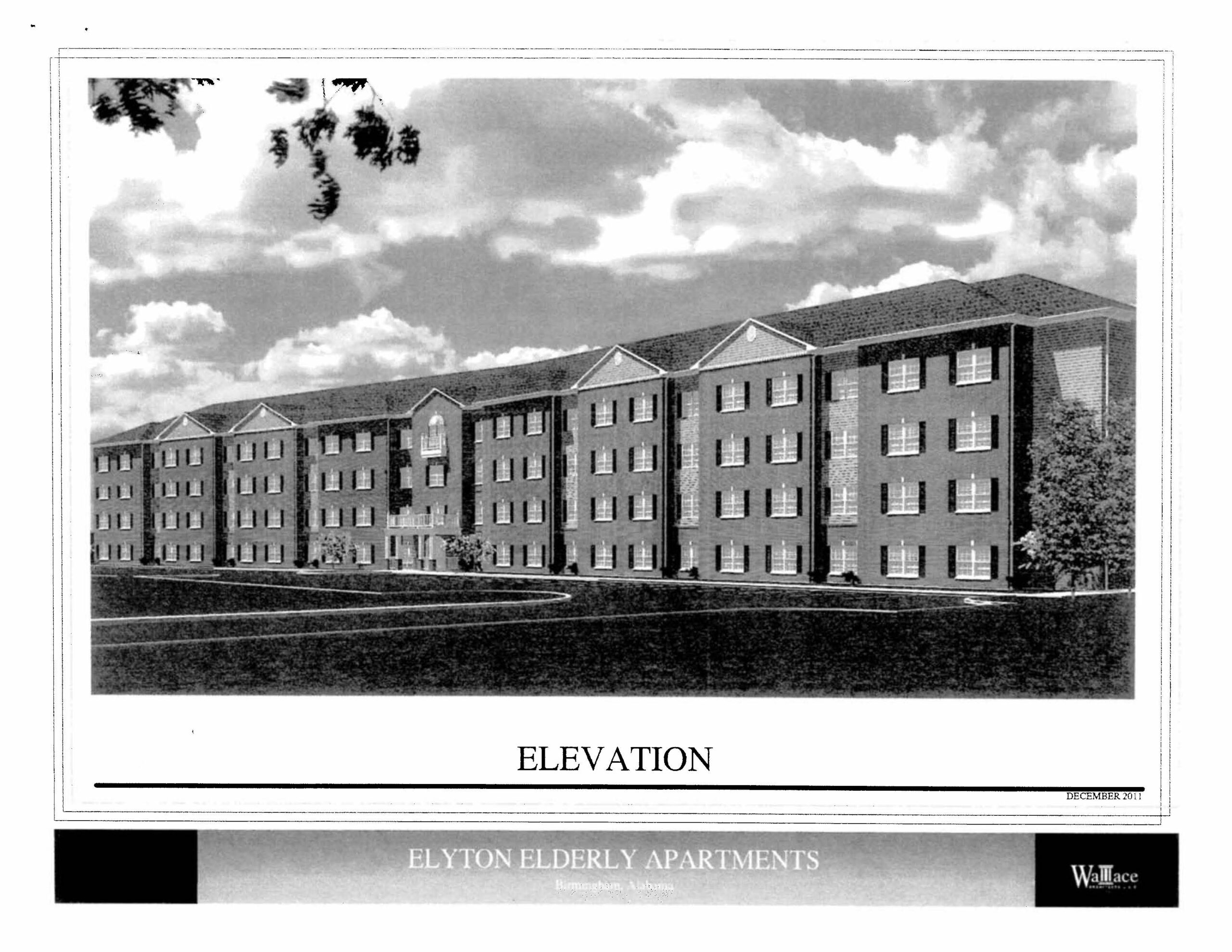
A tour conducted by city council members contradicted Vantage Development’s assertions regarding the irreparable condition of the building. Council members concluded that the original 1908 facade of Elyton School could indeed be salvaged. Subsequently, the committee proposed a compromise: gutting the interior of the building, demolishing the 1920s addition, and integrating the oldest section into Vantage Development’s project.
However, despite these recommendations, Vantage Development failed to furnish the requested reports, prompting the city council to reject the rezoning request. Consequently, the proposed project was abandoned. In 2013, the City of Birmingham took measures to secure the building by boarding the windows and welding the doors shut, aiming to deter vandalism and safeguard the property until a suitable solution could be devised.
Today, Elyton School is the second oldest school left standing in Birmingham, the first being Powell School. Despite efforts to preserve elements of its historic significance, the fate of Elyton School remains uncertain.

